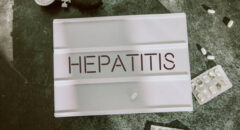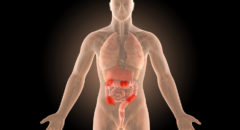
The most frequent types of viral hepatitis in the United States are A, B, and C. Hepatitis B and C may be acquired by contact with virus-infected body fluids such as blood.
However, hepatitis A may be acquired by ingesting contaminated food.
This article investigates the relationship between hepatitis and what people eat and drink. It also outlines preventative techniques and what to do if someone suspects they have hepatitis.
RELATED: Hepatitis A vs. Hepatitis C: What’s the Difference?
What Types of Hepatitis May Be Acquired via Food?
According to the Centers for Disease Control and Prevention (CDC), the only kind of viral hepatitis that may be transmitted via contaminated food or water is hepatitis A. The virus typically spreads when an unvaccinated individual eats contaminated food and drink.
Hepatitis B and C cannot be acquired by contaminated food or water.
Hepatitis B may be transmitted via the following routes:
- Contact with sperm, blood, and other fluids using equipment with blood on it from someone with hepatitis B
- Sexual contact with someone who has the virus
- Sharing personal care products like razors and toothbrushes
Hepatitis C spreads via the bloodstream. Hepatitis C may be passed from person to person by needle sharing, infected blood transfusions, and the use of filthy medical equipment such as needles or other devices.
Transmission of Hepatitis B and C may also occur during delivery and in healthcare institutions with inadequate infection control.
RELATED: Hepatitis C and Liver Transplants: What You Need to Know
How May Someone Get Hepatitis From Contaminated Food?
People may get hepatitis A if they consume food or drink water contaminated with the virus. The infection may spread from someone who does not wash their hands after using the restroom and then touches food.
People may develop hepatitis A, for example, if they consume oysters picked from sewage-contaminated water. According to the Food and Drug Administration (FDA), hepatitis A infections are uncommon in the United States.
What Foods May Spread Hepatitis?
Although hepatitis A may be acquired via almost any food or drink, the following are some of the most common sources of outbreaks in the United States:
- Salads with water and raw fruit or berries
- Raw shellfish and veggies
Symptoms of Hepatitis Transmitted By Food
It might take 14-28 days for a person to display symptoms of hepatitis A infection. The symptoms might be moderate or severe, but they seldom lead to death.
Hepatitis A symptoms include:
- Diarrhea
- Dark urine
- Stomach pain
- Appetite loss
- Nausea
Jaundice, or yellowing of the skin and whites of the eyes, may last anywhere from a few weeks to many months.
A person may not exhibit all of the abovementioned symptoms, which are more prevalent in adults than children. Children under the age of 6 years are more likely to be asymptomatic.
What To Do if You Suspect You Have Hepatitis from Food
If someone suspects they have taken contaminated food or drink, they should see a doctor. The doctor may test for the infection.
A healthcare provider may offer postexposure prophylaxis (PEP) within two weeks to people who have not been immunized. PEP consists of the following:
- Hepatitis A vaccination for individuals aged 1-40 years
- Immunoglobin specific to hepatitis for those not in the age mentioned above range
A person does not need PEP if they have got the immunization or previously had hepatitis A.
According to the CDC, all healthcare institutions are required to report confirmed cases of hepatitis A to local, state, and national authorities for monitoring. These institutions will only exchange the number of reported instances, not individual health information.
Treatment
Hepatitis A has no particular therapy. People should drink enough fluids to replenish the fluids lost due to diarrhea and vomiting. People should avoid using acetaminophen, paracetamol, or other anti-vomiting drugs.
RELATED: Finding the Right Specialist For Hepatitis C Treatment
Prevention
People can lower their risk of Hepatitis A transmission. Before handling raw foods, wash your hands for 20 seconds with warm soap and water. After changing diapers, wash your hands. After using the restroom, wash your hands.
According to the CDC, vaccination is recommended for all children ages 12 to 23 months. The organization also recommends that older children who did not have the immunization when they were younger do so as soon as possible.
Other populations who should obtain the vaccine include males who have intercourse with men and those who travel overseas. A person should consult a doctor to establish if a vaccine is required.
RELATED: What Can I Expect Over Time With Hepatitis C?
Summary
Hepatitis A may be acquired by eating contaminated food or water. This may happen if someone with the virus prepares or touches food and drink after not adequately washing their hands after using the restroom. People should wash their hands and properly clean their kitchens to help prevent the spread of hepatitis A. People should also consult with a doctor to verify whether they need the hepatitis A vaccination.









